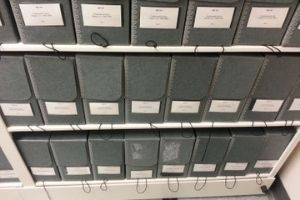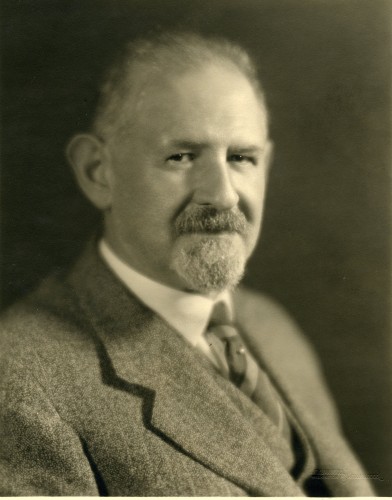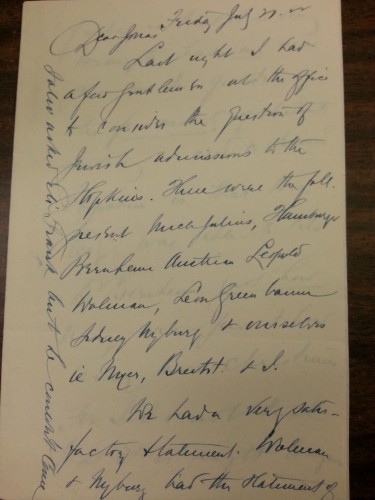Researching a Family “Dynasty” of Jewish Doctors in Baltimore

A blog post by Exhibition Research Intern Sarah Moore. To read more posts by and about interns, click Here.
As a summer 2014 Exhibitions Research intern at the Jewish Museum of Maryland, I am helping develop the upcoming exhibition Jews, Health, and Healing. The 2015 exhibition will explore how medicine shaped both the ways Jews are viewed by others and how they view themselves. This intersection of culture and science has provided some fascinating ways of looking at the construction of identity and empowerment in the Jewish community.
A lot of my research has focused on the Friedenwald family “dynasty” of doctors. Three generations of Friedenwalds practiced ophthalmology in Baltimore. Using JMM’s archive collection I have looked at the Friedenwald manuscript collection, which includes correspondences, speeches, and diaries.

Our exhibit will pay special attention to Dr. Harry Friedenwald (1864—1950). Harry was interested in the history of medicine, particularly Jewish contributions to the field. This research led to the publication of his book Jews and Medicine: Essays in 1944. The exhibition will feature a recreation of Harry’s study.

One of the most interesting things I have found in the Friedenwald manuscript collection is a letter from Harry to his son Jonas (another ophthalmologist) describing medical school quotas for Jewish students. The July 21, 1922 letter describes a meeting that Harry organized with fellow doctors to review Jewish admissions to John Hopkins Medical school. In the early twentieth century there were quotas to limit the number of Jewish medical students. Harry wrote of the “inquisition” into the religious adherence of applicants. This was conducted by asking for statements from each person’s mother. Such policies were used to determine if an applicant was Jewish. Harry hoped to end the quotas.

Hopefully, this letter can be used in the Jews, Health, and Healing exhibition to illustrate the history of quotas on Jewish students in medical schools, as well as the broader story of discrimination in medicine.
